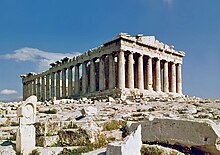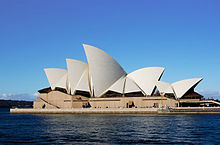About Architecture !!!!
Architecture is both the process and the product of planning, designing, and constructing buildings or any other structures. Architectural works, in the material form of buildings, are often perceived as cultural symbols and as works of art. Historical civilizations are often identified with their surviving architectural achievements.
Definitions and etymology
Architecture is both the process and the product of planning, designing, and constructing buildings and other physical structures.
Architecture can mean:
- A general term to describe buildings and other physical structures.
- The art and science of designing buildings and (some) non building structures.
- The style of design and method of construction of buildings and other physical structures.
- A unifying or coherent form or structure.
- Knowledge of art, science, technology, and humanity.
- The design activity of the architect, from the macro-level (urban design, landscape architecture) to the micro-level (construction details and furniture). The practice of the architect, where architecture means offering or rendering professional services in connection with the design and construction of buildings, or built environments.
Theory of architecture
Historic treatises
The earliest surviving written work on the subject of architecture is De architectura, by the Roman architect Vitruvius in the early 1st century AD.According to Vitruvius, a good building should satisfy the three principles of firmitas, utilitas, venustas,commonly known by the original translation – firmness, commodity and delight. An equivalent in modern English would be:
- Durability – a building should stand up robustly and remain in good condition.
- Utility – it should be suitable for the purposes for which it is used.
- Beauty – it should be aesthetically pleasing.
According to Vitruvius, the architect should strive to fulfill each of these three attributes as well as possible. Leon Battista Alberti, who elaborates on the ideas of Vitruvius in his treatise, De Re Aedificatoria, saw beauty primarily as a matter of proportion, although ornament also played a part. For Alberti, the rules of proportion were those that governed the idealised human figure, the Golden mean.
The most important aspect of beauty was, therefore, an inherent part of an object, rather than something applied superficially, and was based on universal, recognisable truths. The notion of style in the arts was not developed until the 16th century, with the writing of Vasari:by the 18th century, his Lives of the Most Excellent Painters, Sculptors, and Architects had been translated into Italian, French, Spanish, and English.
In the early 19th century, Augustus Welby Northmore Pugin wrote Contrasts (1836) that, as the titled suggested, contrasted the modern, industrial world, which he disparaged, with an idealized image of neo-medieval world. Gothic architecture, Pugin believed, was the only "true Christian form of architecture."
The 19th-century English art critic, John Ruskin, in his Seven Lamps of Architecture, published 1849, was much narrower in his view of what constituted architecture. Architecture was the "art which so disposes and adorns the edifices raised by men ... that the sight of them" contributes "to his mental health, power, and pleasure".
For Ruskin, the aesthetic was of overriding significance. His work goes on to state that a building is not truly a work of architecture unless it is in some way "adorned". For Ruskin, a well-constructed, well-proportioned, functional building needed string courses or rustication, at the very least.
On the difference between the ideals of architecture and mere construction, the renowned 20th-century architect Le Corbusier wrote: "You employ stone, wood, and concrete, and with these materials you build houses and palaces: that is construction. Ingenuity is at work. But suddenly you touch my heart, you do me good. I am happy and I say: This is beautiful. That is Architecture".
Le Corbusier's contemporary Ludwig Mies van der Rohe said "Architecture starts when you carefully put two bricks together. There it begins."
Modern concepts
The notable 19th-century architect of skyscrapers, Louis Sullivan, promoted an overriding precept to architectural design: "Form follows function".
While the notion that structural and aesthetic considerations should be entirely subject to functionality was met with both popularity and skepticism, it had the effect of introducing the concept of "function" in place of Vitruvius' "utility". "Function" came to be seen as encompassing all criteria of the use, perception and enjoyment of a building, not only practical but also aesthetic, psychological and cultural.
Nunzia Rondanini stated, "Through its aesthetic dimension architecture goes beyond the functional aspects that it has in common with other human sciences. Through its own particular way of expressing values, architecture can stimulate and influence social life without presuming that, in and of itself, it will promote social development.'
To restrict the meaning of (architectural) formalism to art for art's sake is not only reactionary; it can also be a purposeless quest for perfection or originality which degrades form into a mere instrumentality".
Among the philosophies that have influenced modern architects and their approach to building design are rationalism, empiricism, structuralism, post structuralism, and phenomenology.
In the late 20th century a new concept was added to those included in the compass of both structure and function, the consideration of sustainability, hence sustainable architecture. To satisfy the contemporary ethos a building should be constructed in a manner which is environmentally friendly in terms of the production of its materials, its impact upon the natural and built environment of its surrounding area and the demands that it makes upon non-sustainable power sources for heating, cooling, water and waste management and lighting.
Philosophy of architecture
Philosophy of Architecture is a branch of philosophy of art, dealing with aesthetic value of architecture, its semantics and relations with development of culture.
Plato to Michel Foucault, Gilles Deleuze, Robert Venturi as well as many other philosophers and theoreticians, distinguish architecture ('technion') from building ('demiorgos'), attributing the former to mental traits, and the latter to the divine or natural.
The Wittgenstein House is considered one of the most important examples of interactions between philosophy and architecture. Built by renowned Austrian philosopher Ludwig Wittgenstein, the house has been the subject of extensive research about the relationship between its stylistic features, Wittgenstein's personality, and his philosophy.




Comments
Post a Comment